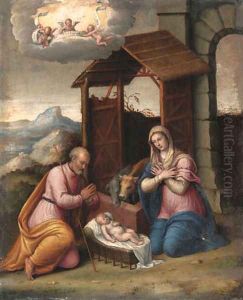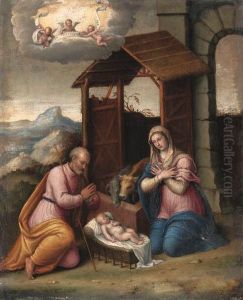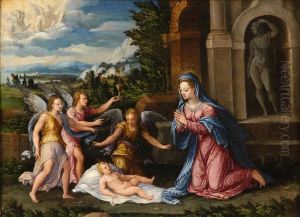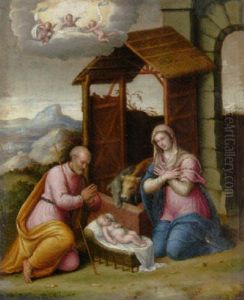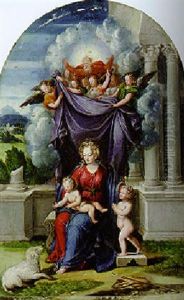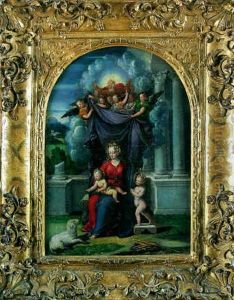Camillo Filippi (Ferrara) Paintings
Camillo Filippi, also known as Camillo da Ferrara, was an Italian painter of the Renaissance period, born around 1500 in Ferrara, Italy. His exact birth date is not recorded, but his contributions to the art world are notably tied to the Ferrara school of painting, which flourished in the 16th century under the patronage of the House of Este.
Camillo's early life and training are not thoroughly documented, but it is believed that he may have been a student of either Boccaccino or of Garofalo, two prominent Ferrarese painters of the time. His style, however, tends to reflect the influence of the latter, suggesting that he was part of the broader current of Renaissance art that emphasized harmonious compositions and a keen attention to detail.
Throughout his career, Camillo worked predominantly in Ferrara, where he executed numerous religious commissions. His works often featured delicate figures set within well-constructed perspective spaces, and he demonstrated a particular skill in his use of color and light, which added a sense of grace to his paintings.
One of Camillo Filippi's significant contributions to the world of art was his role in training his son, Sebastiano Filippi, who became known as Bastianino and was considered one of the leading figures of the late Renaissance in Ferrara. Sebastiano's work shows the clear influence of his father, but also reflects the shift towards Mannerism that was becoming prominent at the time.
Camillo continued to paint and influence the Ferrarese art scene until his death in 1574. Although not as well-known as some of his contemporaries, Camillo Filippi is remembered for his role in the development of the Ferrara school and for his contribution to the rich tapestry of Renaissance art in Italy. His works can still be seen in various churches and collections, primarily within the region of his birth, where they continue to be appreciated for their serene beauty and historical significance.
